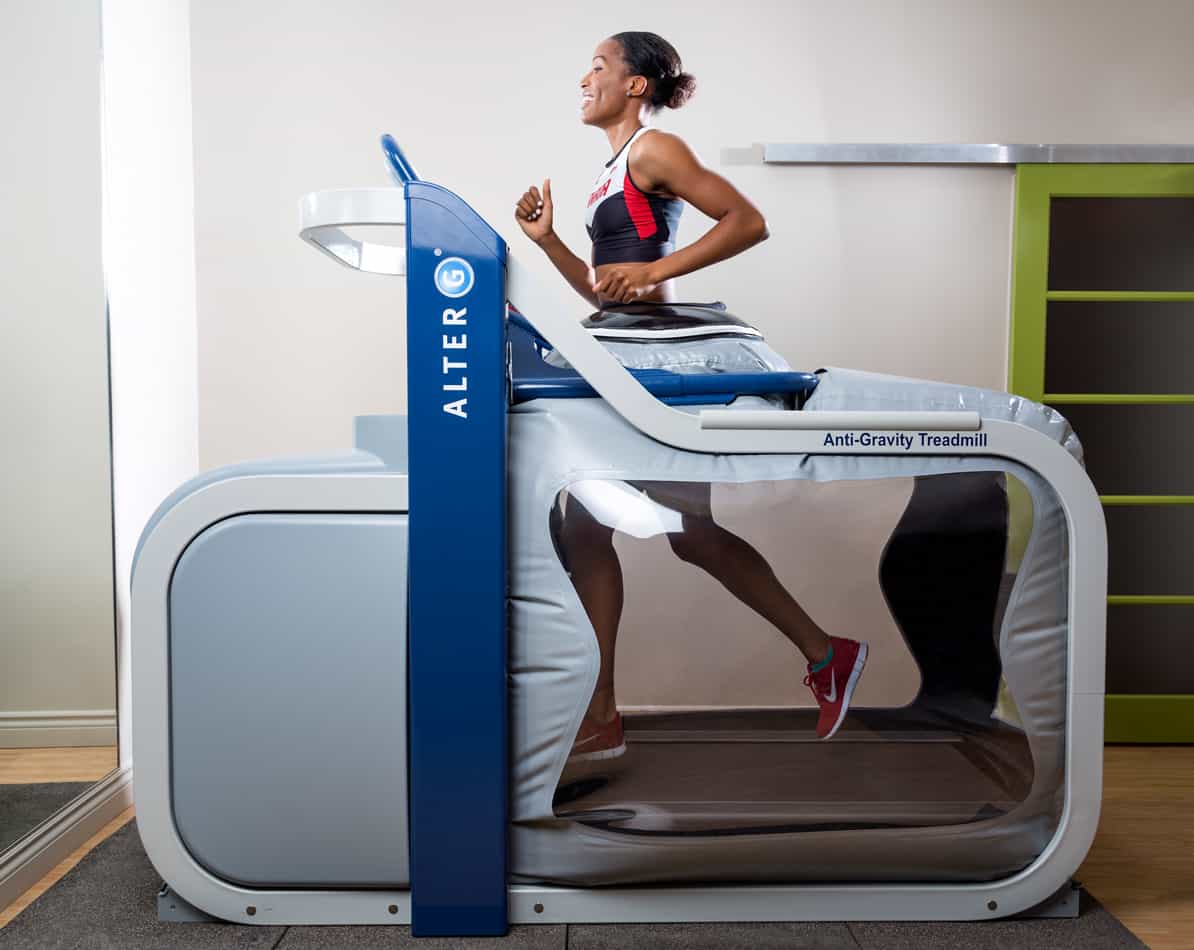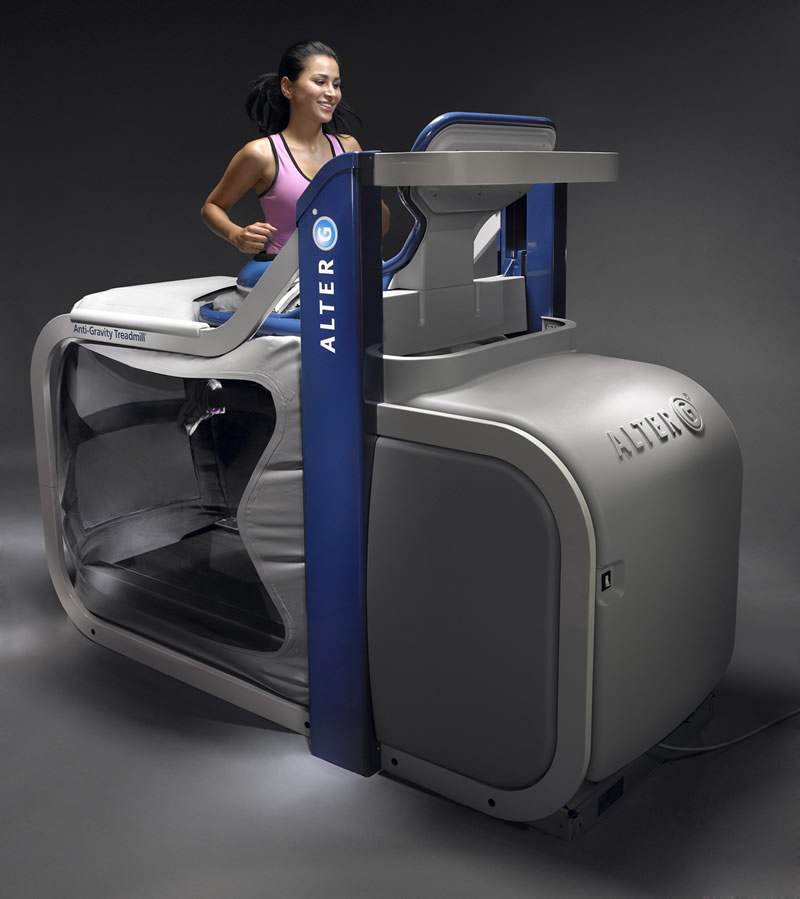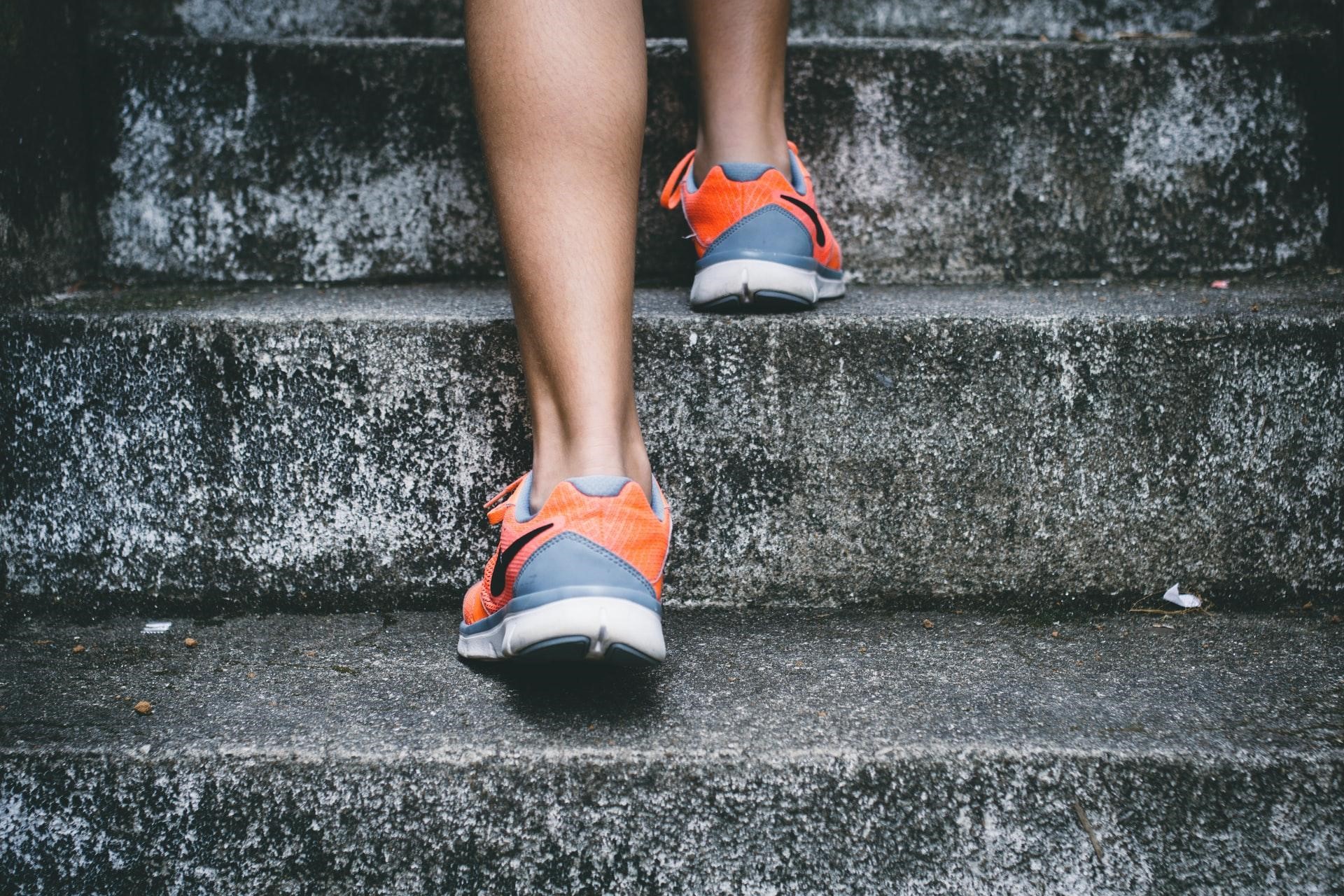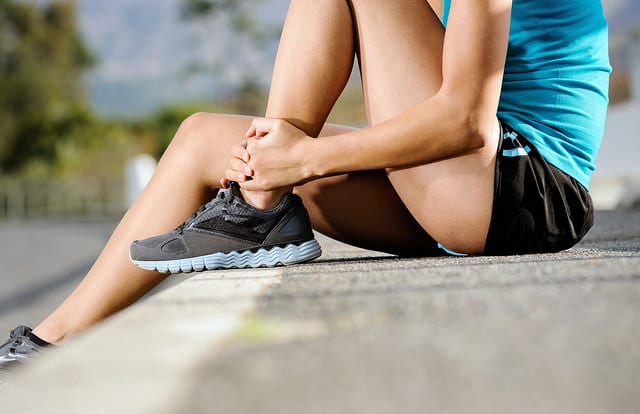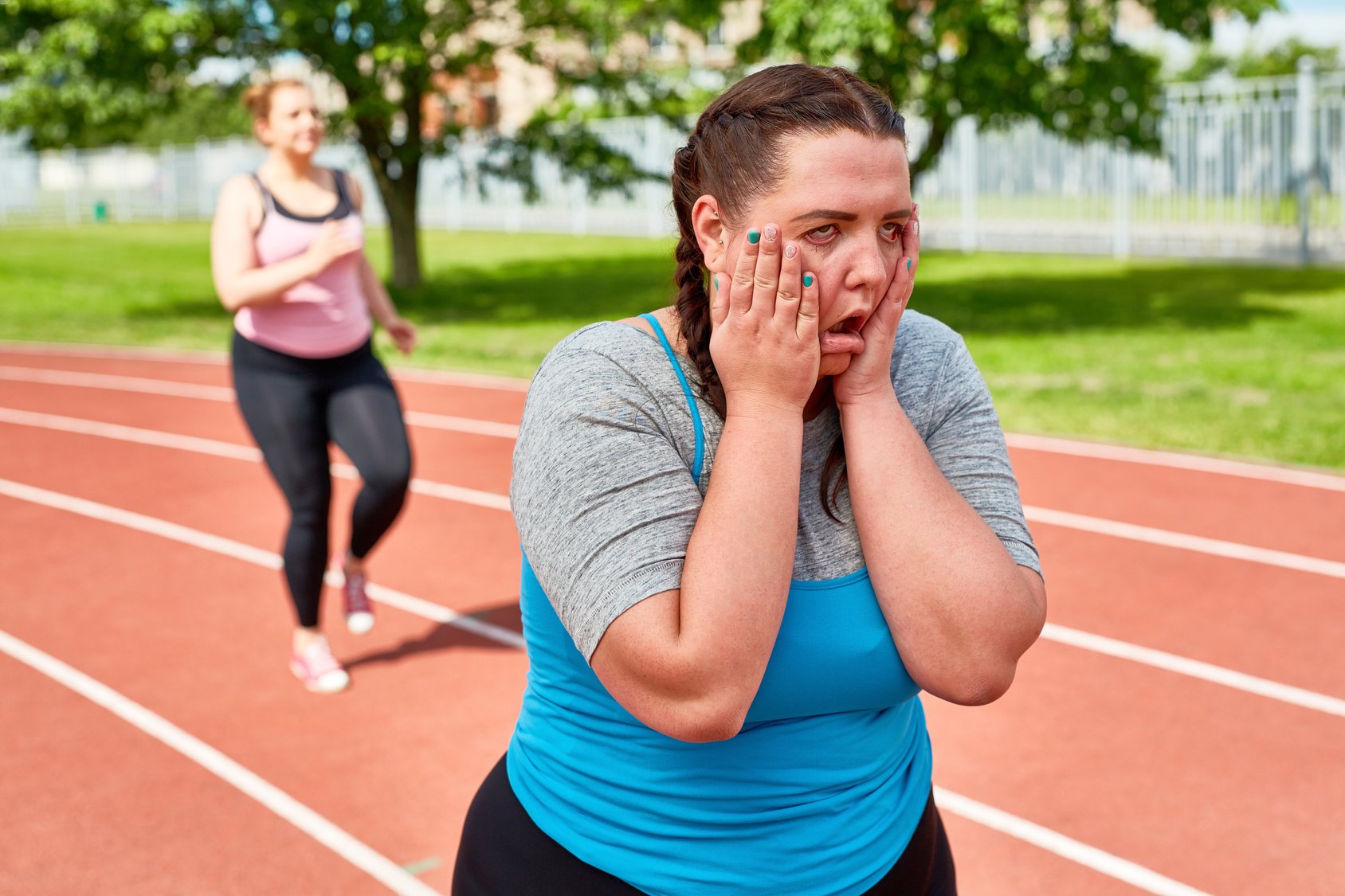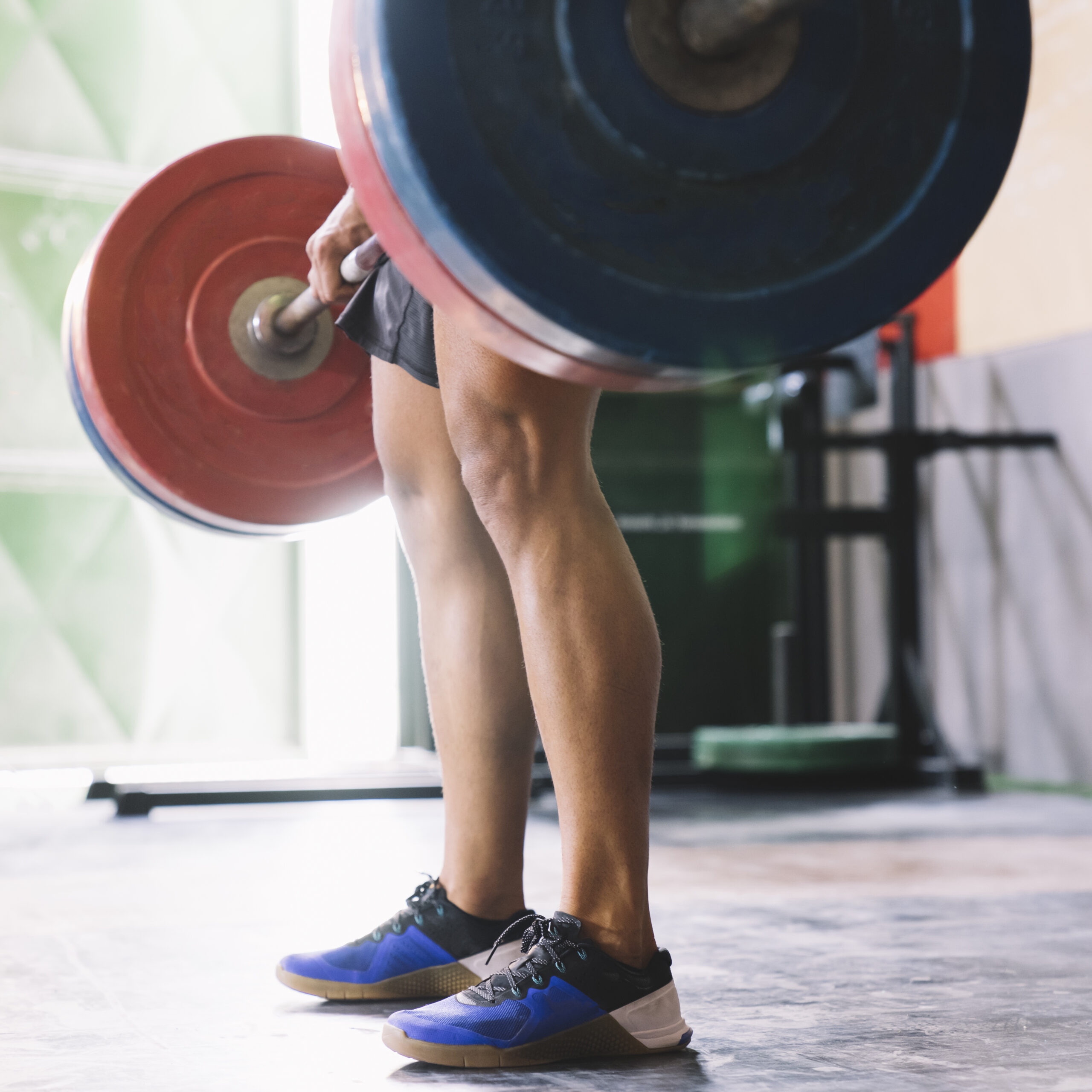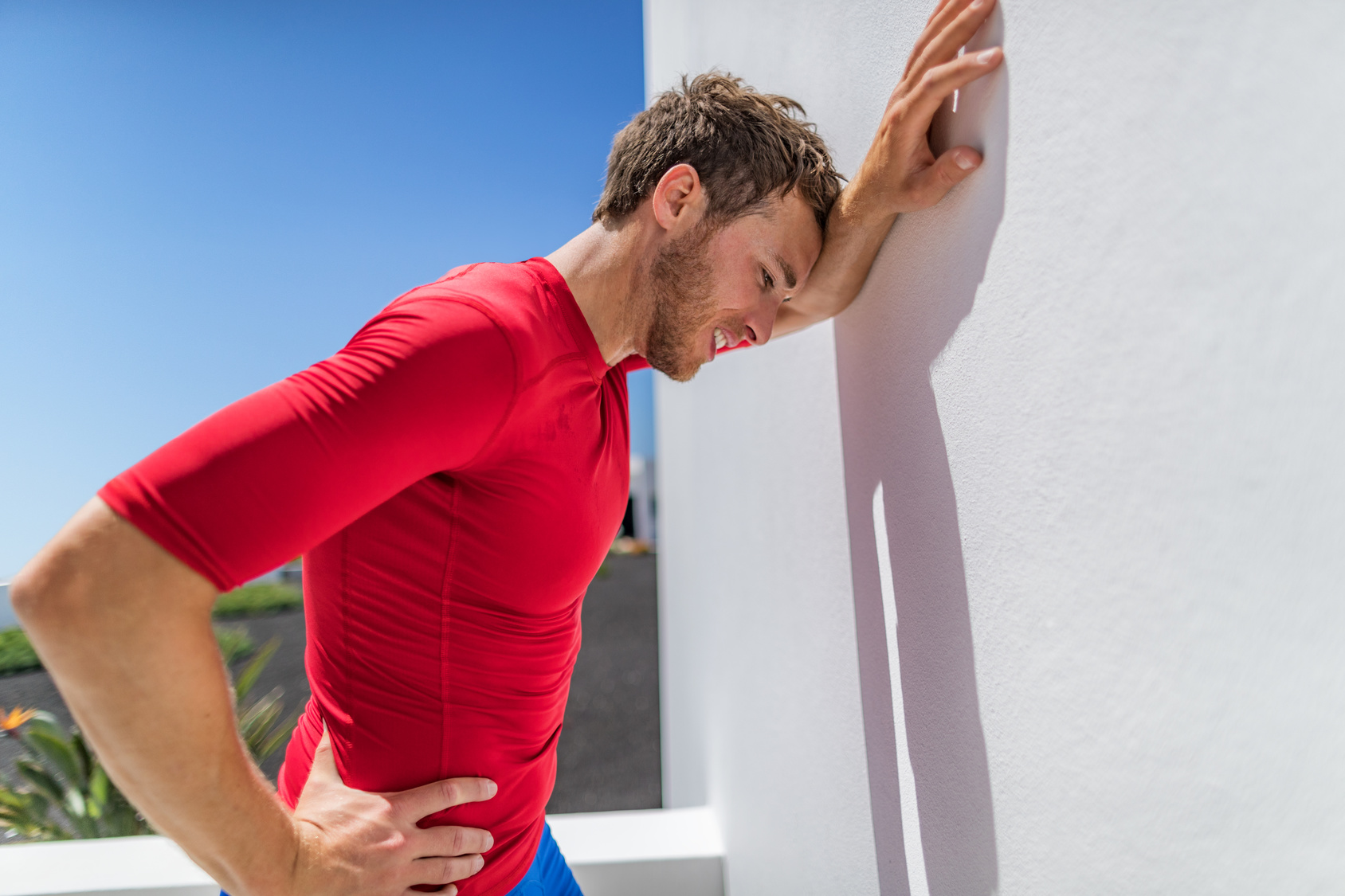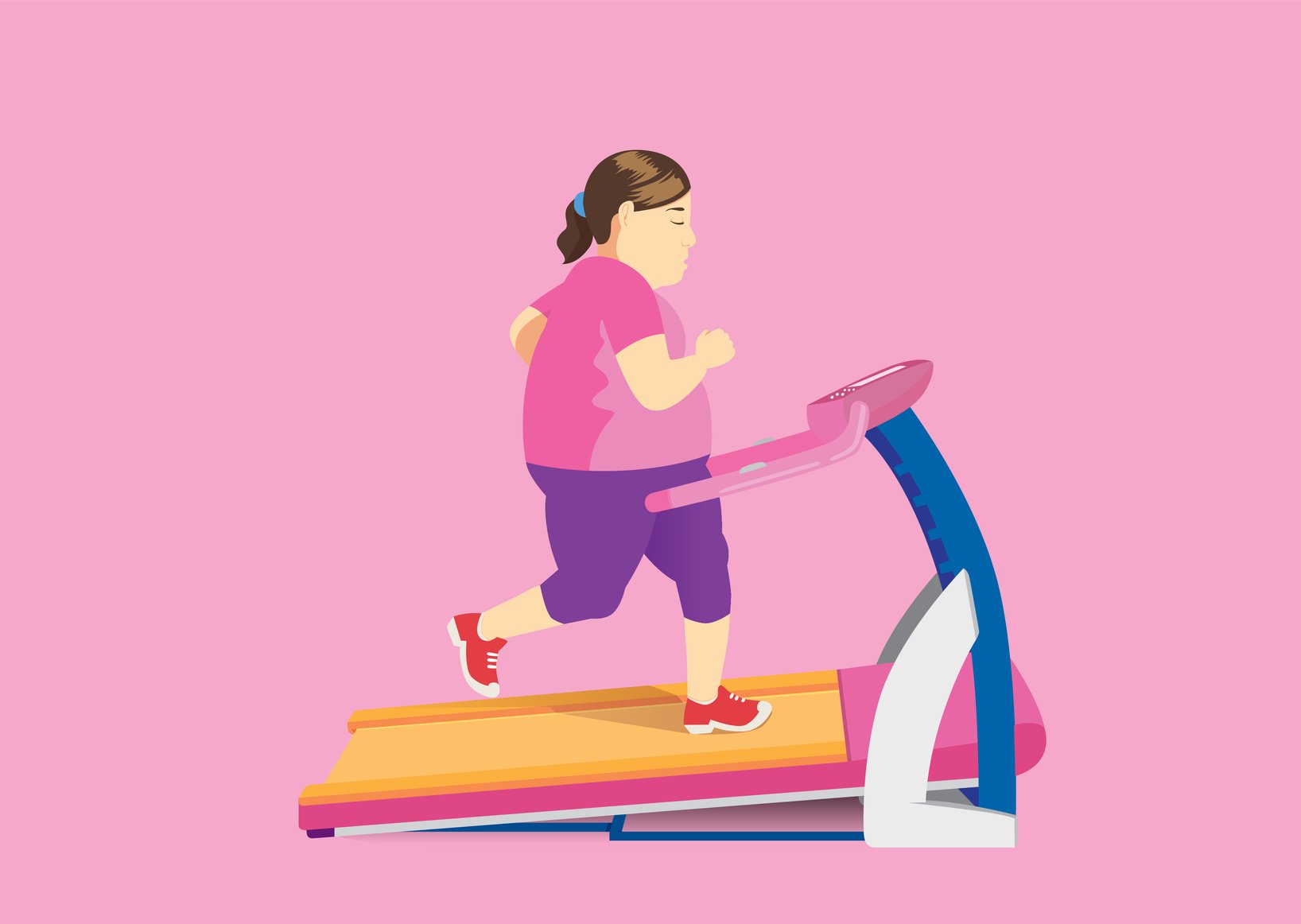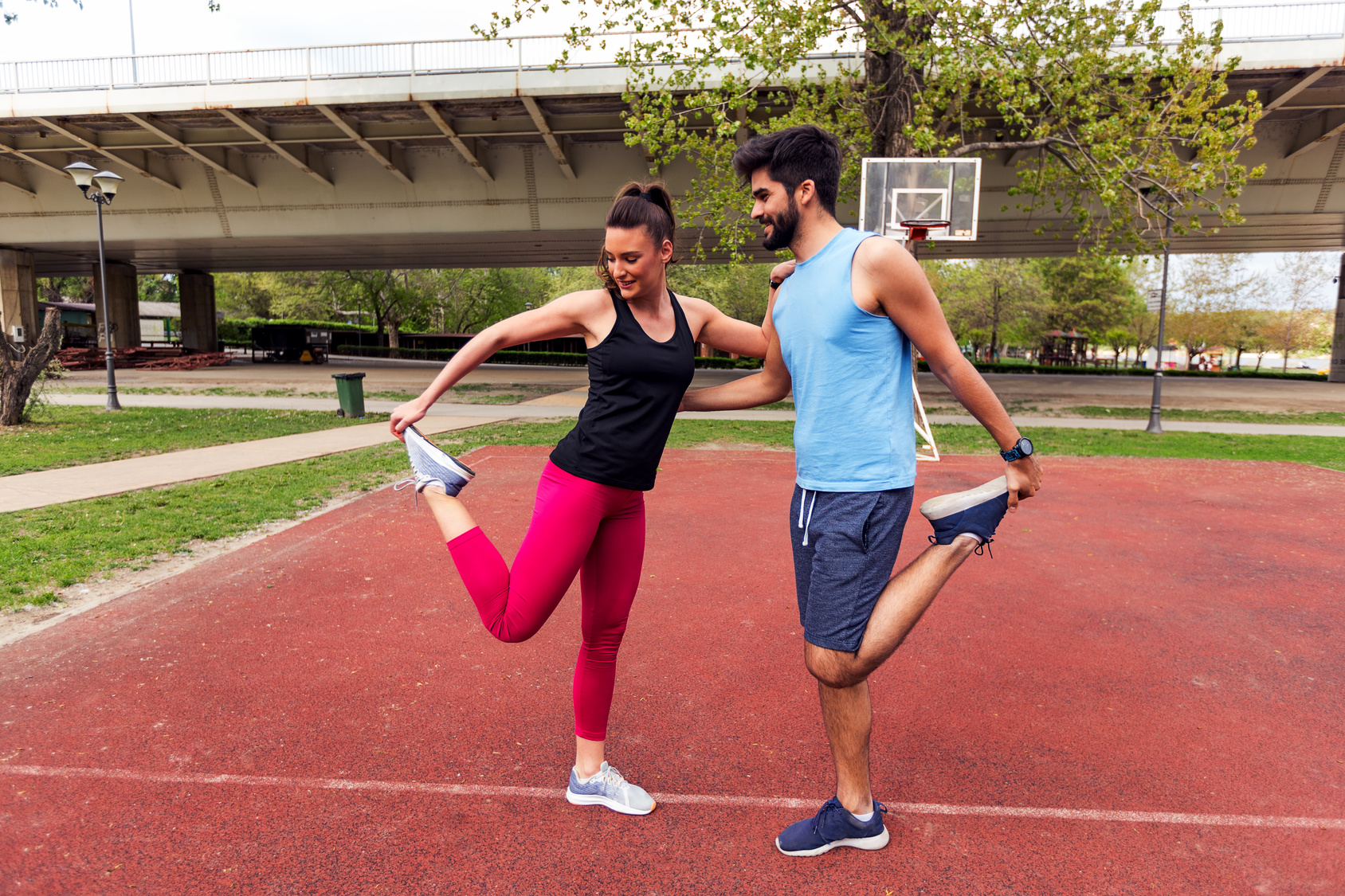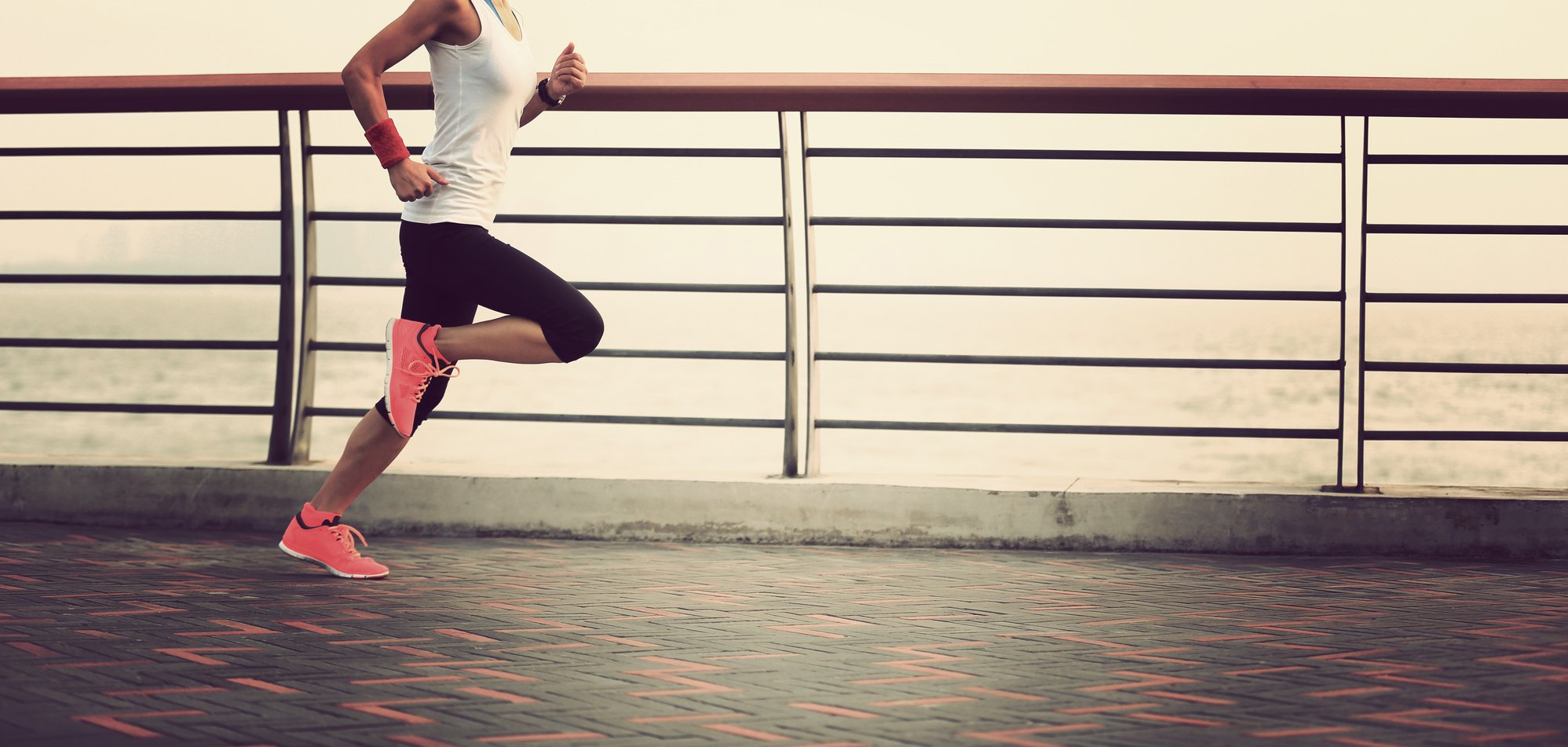Ball of Foot Pain While Running? Here’s What’s Going On
If the balls of your feet are barking after a run, welcome to the club — but also, let’s fix that ASAP. That pain under your toes isn’t something to ignore or tough out. It’s your body waving a big red flag.
During every mile you run, your forefoot takes on up to 110 tons of force. Yeah, you read that right — tons. So when runners complain about soreness or stabbing pain in the ball of the foot, it’s not surprising. It’s common. And the usual suspect? A nasty little overuse injury called metatarsalgia.
What Is Metatarsalgia?
Metatarsalgia is just the fancy word for pain and inflammation in the ball of your foot — that area right behind your toes. It’s not a single condition but more of a catch-all term for what happens when those metatarsal heads (aka the bottom joints of your toes) get beat up from repeated impact.
Think of it as your forefoot’s way of saying, “Too much, too soon, too often.”
👣 What It Feels Like (The Real Symptoms)
Here’s how runners usually describe it:
- Burning or aching pain under the second or third toe. Feels deep. Feels hot. Feels unfair.
- Sharp, stabbing pain during push-off. Like you’re toeing off a rock.
- A “pebble in the shoe” feeling, even when your shoes are clear. Super common.
- Tingling or numb toes, thanks to angry nerves in that compressed forefoot.
The pain usually builds over time — it might just be mild soreness at first, but ignore it and it’ll turn into a full-blown hobble fest. Sometimes it hits hard after a long run or speed session on pavement. And if the pain disappears when you’re off your feet? That’s a telltale sign it’s impact-related.
🙅♂️ But Here’s the Catch…
Metatarsalgia is a symptom, not a singular cause. And it can be mistaken for other foot issues — which matter, because the fix depends on the true culprit.
You’ve gotta rule out stuff like:
- Morton’s Neuroma: This one’s a pinched nerve between your toes — feels sharp, might come with burning or numbness. Very similar to metatarsalgia, but different treatment.
- Metatarsal Stress Fracture: If it hurts even when you’re resting or at night, get it checked. X-rays might miss it early on, so MRIs or bone scans are often needed.
- Joint instability or bursitis: Also cause pain under the toes, especially with swelling or instability.
In short: if the pain’s not improving, don’t play Dr. Google. Go see a sports podiatrist or foot doc. You want to fix it, not guess at it.
🦶 Can You Run with Metatarsalgia?
Ah, the million-dollar question: Can I still run through this ball-of-foot pain?
Short answer? Maybe.
Long answer? Only if you’re honest with yourself—and the pain is mild.
Here’s the deal: running puts a ton of pressure on your forefoot. Every stride? Boom—your entire body weight gets slammed through that already-irritated area. If your metatarsals are inflamed, that pounding is basically gasoline on a fire.
I’ve seen runners try to tough it out—go for that long run anyway—and end up hobbling for weeks. One guy I know admitted, “Every time I tried to push through the early pain, I made it worse.” Eventually, he learned to back off for a week or two whenever it flared up—and surprise, that saved him from months off later.
😣 Sharp Pain? Stop. Sore and Tolerable? Maybe…
If the pain feels like a knife stabbing the ball of your foot? Do not run through that. No medal is worth a stress fracture.
But if it’s mild—more like a bruise, no sharp twinges—you might be able to sneak in some short, easy runs. That means:
- Soft surfaces only (grass, trails, treadmill)
- No speed work
- No long runs
- Cushioned shoes or insoles
- Possibly metatarsal pads to offload pressure
One runner told me he could still jog a few slow miles on grass, but only after the worst pain subsided. The moment things felt worse mid-run, he stopped. Smart move.
Always listen to the pain scale. A little ache? Maybe okay. Real pain? Stop. Running through certain injuries (like a brewing stress fracture or a neuroma) can seriously mess you up. We’re talking months—not days—off the road.
⚠️ Why Metatarsalgia Happens to Runners
If you’ve got this issue, it usually comes down to a mix of bad timing, poor mechanics, and overuse. Here’s the breakdown:
🔁 1. Too Much Impact, Too Often
Running is high-impact—especially on the forefoot. Every time you push off, your metatarsals take a beating. Multiply that by thousands of steps per run, and yeah, things start to get angry down there.
Speed work, plyos, or running on concrete make it worse. That’s why high-mileage runners or folks who love hammering tempo runs often end up with forefoot issues.
📈 2. You Jumped Ahead Too Fast
This one’s classic: you got excited, came back too fast after time off, or ramped up your mileage in a hurry. The foot wasn’t ready for the workload, and now it’s screaming.
One runner told me her metatarsalgia “exploded” after jumping into intense training right after recovering from illness. She skipped the build-up and paid the price—ended up in a boot.
Lesson: the 10% rule exists for a reason. Build slow or break down.
🧱 3. Tight Calves or Achilles? Your Feet Pay for It
When your calves are stiff, your ankle can’t flex right. That shifts the load forward—straight to your metatarsals.
Also, if your Achilles is tight, it shortens your stride and forces you to toe off harder. Over time, that extra pressure lights up the forefoot.
A lot of runners with ball-of-foot pain also have neglected stretching routines. If you’re skipping the calf work, you’re asking for trouble.
🦶 4. Your Form (or Feet) Are Working Against You
Overpronators, supinators, heavy strikers—listen up. If your biomechanics are off, your forefoot is probably taking the brunt of it.
Landing too far forward, overstriding, or running downhill like a runaway truck? Recipe for pain. One minimalist runner I coached used to blow up his forefoot on downhills—until he learned to “run like a ninja” and lighten his footstrike. No more issues since.
Also, foot shape matters. Flat feet or high arches can both cause uneven pressure distribution that jacks up the metatarsals. If your shoes don’t match your feet, that pressure gets worse.
Here’s your David Dack-style rewrite of that section — raw, runner-to-runner, with all the facts intact, just filtered through real-world coaching experience and no-BS talk.
What’s Beating Up Your Forefoot? Let’s Break It Down
If your forefoot’s barking—especially under the ball of the foot—you might be dealing with metatarsalgia. That burning, bruised feeling under the metatarsals can sneak up on you or hit out of nowhere. Either way, it’s a sign something’s off.
Before we talk treatment, let’s figure out why it’s happening. Because pain in the foot almost always comes back to gear, form, or structure.
👟 1. Crappy Shoes? Yeah, That Might Be It
Let’s be honest—shoes matter more than most runners admit.
Running in beat-up trainers with dead cushioning? That’s a fast track to forefoot pain. The EVA foam in your midsole breaks down with every mile. If your shoes don’t bounce anymore, your feet are absorbing that shock—especially up front.
Too tight? Especially around the toe box? That’ll compress your metatarsals and make things worse.
And if you’re into minimalist shoes or racing flats, heads up: they offer zero forgiveness if your feet aren’t ready. They might work for short bursts or races, but if your forefoot isn’t strong, they’ll chew it up.
True story: I knew a guy who ran a fast 5K in shoes that should’ve been retired two months prior. By the next morning, his forefoot felt like someone had smashed it with a mallet. Just one race. One bad shoe choice. That’s all it took.
Moral? Check your shoes. Replace them regularly. Rotate pairs. And if your forefoot starts to throb, suspect the sneakers first.
🦶 2. Your Foot Shape’s a Player Too
You can’t out-train your bone structure—but you can work with it.
Got high arches? You’re landing on a smaller surface area, which puts extra pressure on your forefoot with every stride.
Flat feet? You might lack that natural arch support, so your metatarsals end up bearing more weight than they’re built for.
Bunions? Hammertoes? Any of those funky foot quirks can shift your weight and mess with push-off mechanics.
- Hammertoe? That toe doesn’t take its share of the load, so the metatarsal underneath it gets crushed.
- Bunion? Your big toe bails out early, shifting force onto the second toe and its metatarsal.
None of that’s your fault—but it’s your job to work around it. That might mean using orthotics, forefoot pads, or getting shoes with better structure. A good running store can help you figure it out.
🧍 3. Other Sneaky Contributors
Running isn’t always to blame. Here are a few other things that can set your metatarsals on fire:
- Standing all day (especially on hard floors)
- Wearing non-supportive shoes in everyday life (flip-flops, dress shoes, heels—yeah, those count)
- Carrying extra weight (more load = more pressure per step)
- Thick calluses underfoot can shift pressure points, too
But 9 times out of 10 with runners? It comes down to these three:
- 👟 Training habits
- 👣 Shoe choice
- 🔁 Biomechanics
Dial those in, and you’ll fix the problem at the source—not just mask it.
Here’s your content rewritten in David Dack’s authentic, no-fluff coaching style — direct, real-runner language with all the original facts and tips, now sounding like advice from a coach who’s dealt with this kind of pain himself:
⚡ How to Treat Ball of Foot Pain from Running
(a.k.a. Dealing with Metatarsalgia Like a Pro)
So your forefoot feels like it’s been punched from the inside? Yeah — that’s probably metatarsalgia rearing its ugly head. Whether it crept up during a long run or smacked you mid-stride, here’s the deal: the sooner you deal with it, the faster it goes away. Ignore it, and you’ll be limping through life (and missing workouts) way longer than you want to.
Let’s get into a quick-hit checklist for treating that burning, bruised feeling under the ball of your foot — and getting you back on the road smarter than before.
✅ Quick Fix Checklist for Forefoot Pain
🛑 1. Rest & Ditch High Impact
First things first — don’t run through this. If it hurts, stop. Take a few days off or more if it’s bad. Running on inflamed metatarsals is like stomping on a bruise over and over.
Need to stay active? Do something low-impact — bike, swim, elliptical, whatever doesn’t make it worse. This isn’t about being soft. It’s about healing fast.
🧊 2. Ice the Pain Away
Grab a bag of frozen peas or an ice pack and slap it on the ball of your foot for 15–20 minutes, 2–3 times a day. Especially after walking or standing.
Pro tip: Always put a cloth between the ice and your skin — unless you’re into freezer burn.
🧦 3. Compression Helps
Got swelling? Wrap your forefoot with an ACE bandage or wear a compression sleeve. Start at the toes and go up toward the ankle — snug but not cutting off circulation. It helps reduce puffiness and gives your foot a bit of support.
🛋️ 4. Elevate Like You Mean It
Put your feet up — literally. When you’re resting, prop your foot above heart level. Stack pillows, use the couch armrest — whatever works. Combine elevation with icing for double duty relief.
👣 5. Metatarsal Pads = Game-Changer
These little foam or gel pads go just behind the ball of your foot (not under it). They offload pressure from the sore spot and distribute weight better.
Toss one in your insole and boom — instant relief for a lot of runners. Cheap, simple, and super effective.
👟 6. Wear Better Shoes (Seriously)
Tight shoes and zero cushioning are your enemies right now. Switch to roomy, cushioned shoes with a wide toe box. And around the house? No barefoot walking on hard floors. Slip into supportive sandals or house shoes.
One runner told me his pain only went away after he started wearing cushioned shoes everywhere — even in the kitchen. Lesson: support your feet 24/7, not just on runs.
🦵 7. Stretch Your Calves & Achilles
Tight calves mess with your foot mechanics and dump more pressure onto the forefoot. Loosen them up!
Try:
- Wall calf stretch
- Downward dog
- Foam rolling those calves
Hold each stretch at least 30 seconds, a few times a day. You’ll be surprised how much this helps.
💊 8. Pain Relief Tools (Used Wisely)
If it’s bad, take a short course of ibuprofen or apply Voltaren (diclofenac) gel to the sore area. One runner with forefoot nerve pain swore by Voltaren before long runs to dull the edge.
But remember — this is just for symptom relief. It’s not fixing the problem. Use meds to help manage, not mask and push through.
🧠 The Long Game: Be Consistent, Be Patient
Metatarsalgia isn’t always a quick fix — but it is fixable. Stick to the RICE method (Rest, Ice, Compression, Elevation) daily for the first 1–2 weeks. You’ll likely feel better within a few days, but don’t rush back too soon.
One runner I worked with had to learn the hard way — kept trying to “test it” too early and paid the price in downtime. Once he finally backed off and iced regularly, the pain started fading fast. Lesson? Treat it right the first time.
🩺 When to See a Pro
If your pain:
- Doesn’t improve after a couple weeks
- Gets worse even with rest
- Comes with sharp nerve pain or swelling
…it’s time to visit a sports doc or podiatrist. They can confirm it’s metatarsalgia (not something more serious) and recommend the next move — maybe custom orthotics, cortisone injections, or in rare cases, surgery.
But for most of us? Rest, smart gear, and patience do the trick.
Absolutely! Here’s your rewritten section in David Dack’s voice—authentic, practical, and motivating, with that real-runner edge. The key info and research are all still in there, but now it reads like a trusted coach sharing tips from the road (and from personal trial and error):
🦶 Metatarsal Pads for Runners: Worth It?
In a word? Yes.
If you’re battling ball-of-foot pain, metatarsal pads can be an absolute game-changer. They’re small, cheap, and deceptively powerful. I’ve known runners who limped into a run and jogged out pain-free just by placing one of these little teardrop-shaped lifesavers under their insole.
Let’s break it down.
🎯 What Do Met Pads Actually Do?
Metatarsal pads (a.k.a. “met pads”) are small cushions—usually foam, felt, or gel—that sit just behind the ball of your foot, under your insole. Not on the sore spot, but slightly back from it.
Why? Because that placement supports the metatarsal arch—the area right before your forefoot starts absorbing impact. It redistributes pressure so the painful metatarsal heads (those bones behind your toes) aren’t taking the full force every step.
📚 Studies back this up—met pads reduce peak pressure on the forefoot. That means less pounding, less inflammation, and way less “pebble in your shoe” misery.
💥 Real Talk: Do They Work?
For a lot of runners? Instantly. One guy on a running forum said his forefoot pain was gone after one run. He stuck a met pad under a Superfeet insole and switched to a shoe with a wider toe box—and boom, he was running pain-free again.
That story isn’t unique. I’ve heard it over and over. For chronic metatarsalgia, capsulitis, or even general forefoot fatigue, a properly placed pad can feel like magic.
🧰 How to Use Met Pads (Without Making Things Worse)
Met pads are great—if you place them right. Mess that up, and you could actually add pressure.
✅ Placement is Everything
- Do not put the pad directly under the pain.
- Place it just behind the ball of your foot—toward the arch.
- This creates a little lift that helps spread the metatarsals and unload the sore zone.
- Try this: put your sock on, stand up, mark the halfway spot between your arch and forefoot. Align the pad’s thickest part there on your insole.
📣 Coach’s tip: A few millimeters forward or back can change everything. Don’t be afraid to experiment.
🛠️ Types of Pads
- Self-adhesive foam or felt pads: Stick ’em right to the insole.
- Gel sleeves: Slip-on versions that wrap around your foot.
- Built-in met bumps: Some insoles or orthotics already have a dome built in.
Whatever form you choose, the goal’s the same—redistribute pressure and give your forefoot a break.
🕒 Are They Permanent?
Not necessarily. For some runners, pads are a short-term fix while the foot heals or adapts. After a few weeks or months, the pain fades, and they can phase the pad out.
For others, especially those with chronically inflamed joints or certain foot shapes, a met pad becomes part of the daily setup—and that’s totally fine too.
📣 Coach’s tip: If it keeps you running pain-free, who cares if it’s long-term? You’re doing what works.
➕ Can You Combine Pads with Other Gear?
Absolutely.
- Stick one on top of a flat insole to create a custom setup.
- Use with over-the-counter insoles (like Superfeet or Powerstep).
- Some podiatrists create custom orthotics with cut-outs under the met heads to offload pressure even more.
If you’ve tried all the usual tricks and still feel that sharp pain under your forefoot? This combo approach is gold.
Here’s your rewritten guide on the best running shoes for ball-of-foot pain, now told in David Dack’s real-runner, coach-like voice—straightforward, slightly gritty, and full of practical, no-fluff tips while keeping all the expert-backed facts and shoe recommendations.
Here’s your rewritten section on “Returning to Running After Metatarsalgia” in David Dack’s voice — real, raw, and packed with no-nonsense coaching while keeping all your expert-backed facts and structure intact:
👣 Returning to Running After Metatarsalgia
(AKA: How to Come Back Without Screwing Your Foot Up Again)
You’re finally feeling better. That burning, stabbing pain in the ball of your foot has calmed down. You’re walking around without wincing, and now the itch to get back to running is real.
But here’s the deal: don’t sprint out of the gate just because you’re not limping anymore. This next phase — the comeback — is where most runners mess up. You’ve come too far to sabotage your progress by rushing it.
Let’s walk (literally) through how to return to running the right way after metatarsalgia.
1️⃣ No Running Until You’re 100% Pain-Free in Daily Life
This isn’t negotiable. You’ve gotta pass a few checkpoints first:
- Can you walk barefoot around the house pain-free?
- Go up and down stairs without wincing?
- Do a few light hops in place and press up into a calf raise — no pain in the forefoot?
If the answer is “ehh, kind of,” then you’re not ready. Keep rehabbing. Keep waiting. I know it’s hard — but if you push too soon, you’ll reset the healing clock and be back on the bench.
Remember: almost-healed is not healed.
2️⃣ Start With Short Walk-Run Sessions
Your first few outings back? Keep ’em short and super easy.
Try something like this:
- 1-minute jog / 1-minute walk x 5 rounds = 10 minutes total
Or: - A light, continuous jog for 10–15 minutes on soft ground, at a conversational pace
That’s it. You’re not chasing PRs right now — you’re testing the waters. Aim for 25–50% of your usual weekly mileage in week one. Then wait and see how your foot feels that night and the next morning. That’s the real test.
3️⃣ Run on Forgiving Surfaces (Your Foot Will Thank You)
Skip the concrete jungle for now. Choose:
- Treadmills (with decent cushioning)
- Rubberized tracks
- Soft dirt trails
- Grass (if it’s smooth)
Steep hills and downhills? Hard pass for the first couple of weeks. They put extra pressure right where it hurts — the forefoot. Once your foot proves it can handle the flats, then slowly bring back variety.
💡 Tip: Some runners use met pads or orthotics when easing back in. If it helps you feel more supported, use it.
4️⃣ Go Slow. Then Go Even Slower.
The old 10% rule (increase weekly mileage by no more than 10%) is solid — but after an injury, you might want to go even slower.
Let’s say you ran 5 miles total last week. This week? Maybe 5.5 or 6 miles max, spread out.
Another option? Stay at the same low volume for a week or two. No rush. Watch how your foot responds:
- Slight soreness that fades = usually okay
- Sharp pain or lingering discomfort = red flag
- A new weirdness popping up somewhere else = back off and reassess
One runner I worked with had a long metatarsalgia journey. She said,
“Every time I had a good hike, I’d wait another week before trying again.”
That kind of patience is hard — but it’s smart. And it worked. She got back to 14K hikes pain-free. Slow works. Trust it.
5️⃣ Rehab Doesn’t Stop When Running Starts Again
Just because you’re logging miles again doesn’t mean you ditch the stuff that helped you heal. That’s how runners fall into the injury-relapse trap.
✅ Keep stretching your calves
✅ Keep doing foot and hip strengthening
✅ Keep icing after runs if needed
✅ Keep wearing the shoes and inserts that work — now’s not the time to “try minimalist” or go barefoot
Treat this return-to-run phase like the tail end of your rehab. Because it is.
Here’s your full rewrite of the rebuild and prevention section for metatarsalgia — in David Dack’s voice: real, relatable, and runner-tested. This version keeps all the key facts, expert tips, and cautionary stories while making it feel like advice from a coach who’s been there.
6. Getting Back to Full Training (Without Blowing It Again)
Let’s be honest — coming back from injury is a mental game just as much as a physical one. You’re itching to hit those weekly miles, chase your old paces, and prove you’re back. But if you rush it? You’ll end up right back on the sideline. Trust me — I’ve seen it more times than I can count.
So here’s the rule: don’t run like you never got hurt.
First, make sure you can run 30+ minutes continuously, every other day, at an easy pace without pain. That’s your green light to start ramping up. From there, build gradually. Add mileage or intensity — but not both in the same week.
Start with something like 3 runs + 2 cross-training sessions (swim, bike, row, elliptical — anything low-impact). That lets you stay fit without frying your foot. Then maybe bump to 4 runs + 1 cross-train. Let it evolve.
If that little ache in the ball of your foot starts creeping back? Don’t be stubborn. Mild soreness = okay. Sharp or worsening pain = stop and reassess. I’ve had runners push through a warning sign and get sidelined for another month. No shame in pulling back a day or two. That’s called training smart.
Recovery isn’t linear. You’ll move forward, feel a twinge, back off, then build again. That’s how real runners come back. Metatarsalgia might be annoying, but it’s beatable — and I’ve seen plenty of runners come back strong, even run marathons and ultras afterward.
Just don’t forget what got you healthy: good shoes, smart progression, and listening to your body. Those habits aren’t temporary — they’re part of your new normal.
How to Prevent Metatarsalgia (So You Don’t Go Through This Again)
Most overuse injuries — including this one — don’t happen out of nowhere. They creep in from a combo of gear issues, training mistakes, and weak spots in your body.
Here’s how to fight it off before it flares up again:
👟 1. Wear the Right Shoes (And Swap Them Before They’re Dead)
I know, I know — you’ve heard it before. But I’ve coached runners who were limping from metatarsal pain only to realize they were running in shoes with 700+ miles on them. That soft foam you started with? It’s a pancake now.
Look for:
- A wide toe box (your toes need room to spread)
- Good forefoot cushioning
- Proper arch support (based on your feet, not trends)
Minimalist shoes? They can work — if you transition slowly and do foot-strength work. Otherwise, they’re a fast track to pain.
And casual shoes matter too. Stomping around in narrow dress shoes or high heels for hours? That’s forefoot abuse. Your recovery doesn’t end at mile 5 — it continues with what you wear the rest of the day.
Golden rule: If you’re unsure if your shoes are cooked? Retire them.
As one runner put it:
“If in doubt, swap ‘em out. Learned that the hard way.”
📈 2. Train Smarter, Not Just Harder
Don’t make the classic rookie mistake: jumping into big mileage, hill work, and speed all in the same week. That’s how metatarsalgia starts.
Stick to the 10% rule — increase weekly mileage gradually. Add one new stressor at a time (e.g., a longer long run or some tempo miles, not both).
And if you’re changing terrain — like moving from treadmill to concrete, or flats to trails — do it slowly. Your feet need time to adapt to different impacts and angles.
🦶 3. Treat Early Symptoms Like Red Flags
Feel a hot spot under your foot mid-run? Don’t wait. That’s your warning.
Use:
- RICE protocol (Rest, Ice, Compression, Elevation)
- Metatarsal pads or orthotics if needed
- Supportive insoles with forefoot cushioning
You don’t need to live in orthotics forever, but they can be your lifeline when your foot is irritated. Keep a pair of gel pads in your gear drawer and pop them in as soon as you feel that telltale ache coming on.
If you catch it early, it might be gone in a few days. Ignore it, and you could be out for weeks.
🏋️♂️ 4. Strengthen Your Feet, Ankles, and Glutes
If you’ve got a weak chain, something down the line will pay the price — and in this case, it’s your forefoot.
Do these regularly:
- Towel scrunches (with your toes)
- Toe marble pickups
- Barefoot balance drills
- Calf raises and Achilles drops
- “Short foot” doming exercises
And don’t forget glutes and hips. One runner I worked with had chronic metatarsal pain until a PT pointed out her hip stabilizers weren’t doing squat. Once she started strengthening her core and glutes, her foot pain finally chilled out.
Everything’s connected. Weak hips can lead to sloppy foot strike. Sloppy mechanics = more pressure on the ball of your foot. Build the whole system — not just the foot.
Absolutely — here’s your rewritten section in David Dack’s voice: real-runner tone, casual but coach-sharp, and no-nonsense. It’s informative, direct, and speaks from experience while keeping all the facts rock solid.
1. ✅ Stretch Like You Mean It (Especially Calves & Achilles)
Stiff calves = big problems downstream. They pull on everything — including your forefoot.
That tension stacks pressure on your toes and metatarsals, especially if you’ve got past foot issues like plantar fasciitis or bunion history.
Your daily move:
- Wall calf stretch — both with a straight leg and bent knee
- Hamstring and quad stretches — don’t skip those, they support your stride
- Toe extensor and flexor stretches — gently pull your toes up and down to loosen the little foot muscles
- Bonus: Use a lacrosse ball under the foot to roll the arch
🧠 Think of tight muscles like puppet strings pulling on your foot. Keep ‘em loose, or your forefoot pays the price.
2. 🛣 Mix Up Your Terrain (Your Feet Need Variety)
Repetition breaks runners.
If you’re pounding the same concrete loop every day, your feet are taking a beating. Even switching sides of the road helps.
Try this:
- Sub in a soft trail or grassy park once or twice a week
- Throw a treadmill day in for cushioning
- Run along the shoulder if there’s grass or dirt — give your feet some shock relief
Also: cross-train. Even just 1–2 days a week of biking, swimming, or elliptical can save your feet without wrecking your cardio gains.
One of my runners saved her marathon training by swapping a midweek run for 45 minutes on the bike. Feet healed. Fitness stayed.
3. 👟 Shorten the Stride, Soften the Landing
If you’re hammering down the road like you’re stomping grapes, it’s time to fix your form.
- Stop overstriding — your foot should land under your hips, not way out front
- Aim for a midfoot landing — spreads the impact, saves the metatarsals
- Keep your cadence high — ~170–180 steps per minute helps keep your strides light and quick
Think: lift your feet, don’t pound them.
If you’re dealing with recurring foot pain, get a gait analysis. A good coach or PT can spot issues you’d never notice — like a hip drop, weak glutes, or poor ankle mobility that’s quietly destroying your stride.
When to Stop DIYing and Call a Doc
Most foot pain clears up with smart training and rest — but not always. If your symptoms are hanging around like an unwanted house guest, here’s when you need a pro to step in:
🚩Red Flags That Mean “See a Doctor”
- Pain’s not improving after a week+ of rest, ice, and good shoes
- Visible swelling, heat, or redness in the forefoot (could be a fracture or joint issue)
- Pain at rest or at night — metatarsalgia usually eases up off your feet; if it doesn’t, something deeper might be going on (hello, stress fracture)
- Numbness or tingling that sticks around — could be a nerve issue like Morton’s neuroma
- Weird toe movement or deformities — hammering, bunions, toes drifting out of line? Might need structural help (orthotics, taping, etc.)
- One big painful step that led to sharp pain or swelling — don’t play hero. Get an X-ray. You could be looking at a full fracture.
🧠 Rule of thumb: If it hurts to walk, don’t run on it. If it’s not better in 10 days, let a doc take a look. Ignoring it could cost you weeks or even a season.
Here’s a David Dack-style rewrite of your metatarsalgia “doctor visit + conclusion” section—same rich info, now delivered like a real runner-coach giving you the straight talk: no fluff, all grit, and practical advice you can run with.
🥾 What to Expect When You Finally See a Doc for Metatarsalgia
Alright, so you’ve tried all the DIY fixes—new shoes, rest days, toe spacers, better lacing—and your foot still feels like someone’s jabbing a pebble under your toes every time you push off?
It’s time to see a pro.
And don’t worry—seeing a doctor doesn’t mean you’re broken or benched for good. It means you’re ready to figure out what the hell’s going on so you can fix it right and get back to running.
🧑⚕️ The Exam: What the Doc Will Actually Do
They’ll start by checking your foot:
- Press around to pinpoint the pain
- Assess how you walk and stand
- Look at foot shape, arch, calluses, flexibility
- If needed, they’ll order X-rays (to rule out stress fractures or arthritis), or an ultrasound/MRI if they suspect something like a Morton’s neuroma
Basically, they’re ruling things in or out. Sometimes what feels like metatarsalgia turns out to be something sneaky like a stress fracture, a small neuroma, or arthritis in a toe joint.
🛠 If It Is Metatarsalgia (and Not Something Worse)…
You’ll likely be sent home with the greatest hits:
- Rest + NSAIDs (ibuprofen, naproxen) to calm inflammation
- Metatarsal pads or orthotics to offload pressure
- Possibly trimming a painful callus
- PT exercises to fix the mechanics that caused it in the first place
Some docs will also recommend custom insoles with special cut-outs under the ball of your foot—these can take a ton of pressure off where it hurts most.
If it’s a real stubborn case, they might shoot a cortisone injection into the inflamed spot. I’ve seen this work like magic for some runners, giving them a few weeks or months of calm while they work on fixing the root cause.
🔪 What About Surgery?
Let’s not go there… yet.
Surgery is rare. But in chronic cases that refuse to improve, especially if there’s a structural issue (like a dropped metatarsal or bad toe deformity), it’s on the table.
Options include:
- Straightening a hammertoe or bunion
- Removing a neuroma
- Realigning or shortening a metatarsal bone (yep, that’s a thing)
But again, most runners never need surgery. So don’t panic.
🧠 Mental Game: Don’t Avoid the Doc Out of Fear
Let me guess—you’re worried the doctor’s gonna say, “Just stop running.”
But here’s the truth: a good sports doc doesn’t want you to stop—they want to get you back out there smarter and stronger.
Sometimes that means a break. Sometimes it means a boot, PT, or shoe changes. But almost always, it means a plan that works long-term, not just “toughing it out.”
I’ve seen runners waste months limping around trying to fix things themselves. One smart visit could’ve saved them all that pain and delay.
Dr. John Cianca, a top sports rehab doc, put it best:
“Unmanaged metatarsalgia can lead to joint damage, chronic stiffness, and long-term motion loss.”
Translation? Get it looked at before it becomes a bigger deal.
✅ Final Word: Don’t Let a Hot Foot Stop You
Let’s call it like it is: metatarsalgia sucks. It’s a small pain that turns into a big, momentum-killing problem if you ignore it.
But here’s the good news: it’s very treatable. With smart action, most runners come back fully. And stronger.
🔁 What to Do:
- At the first sign of pain, back off. Don’t be the hero who runs through it and ends up sidelined for six weeks.
- Use RICE, better shoes, and pads to give your foot a break
- If it’s still bad after a week or two? See a doc. Get a game plan.
- Do the rehab. Strengthen. Fix the cause, not just the pain.
🔄 What Happens When You Handle It Right
One of my training partners battled this hard. Ball-of-foot pain slowed his stride and made every push-off miserable.
So he took time off, switched to wider shoes with more cushion, added calf stretching and foot drills, and reintroduced running gradually.
First run back? Slow. Humbling.
Four weeks later? Back to 20–30 mile weeks, pain-free.
That’s how you do it. That’s the long game.
👣 Your Feet Are Your Foundation
You can’t run strong if your feet are broken down. Treat them right, and they’ll carry you farther than you ever thought possible.
So don’t ignore that burning under your toes. Respect it. Learn from it. Fix it.
Because metatarsalgia doesn’t have to stop you—it can teach you how to train smarter, recover better, and come back tougher.

